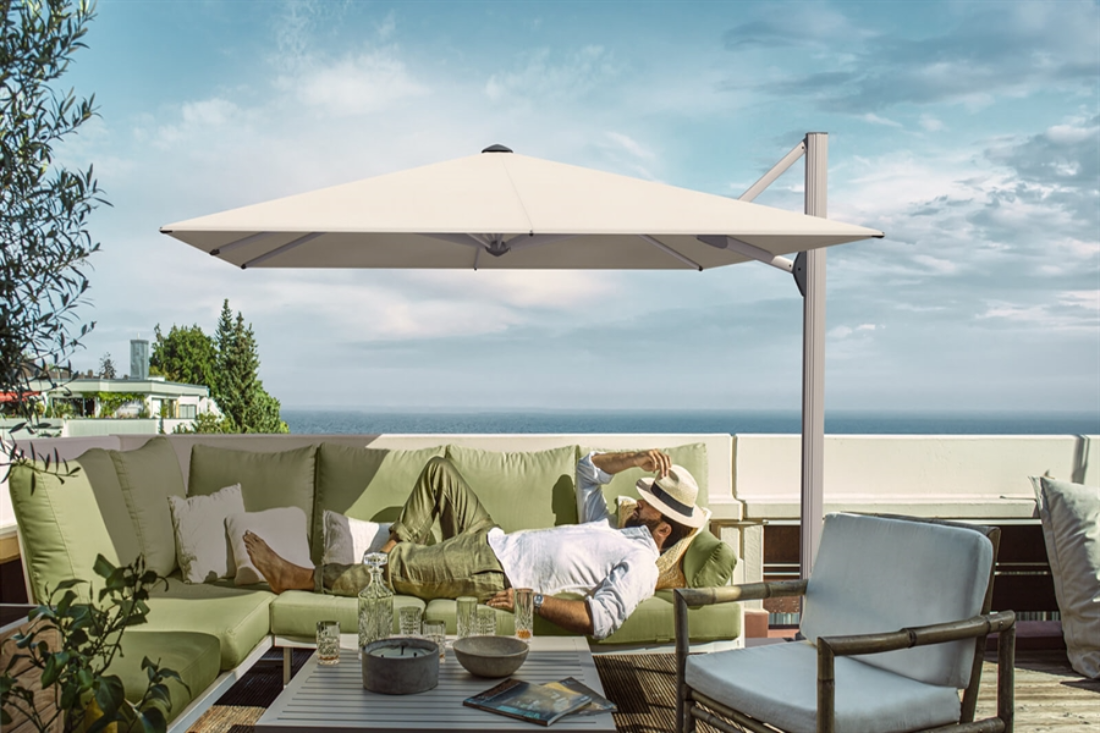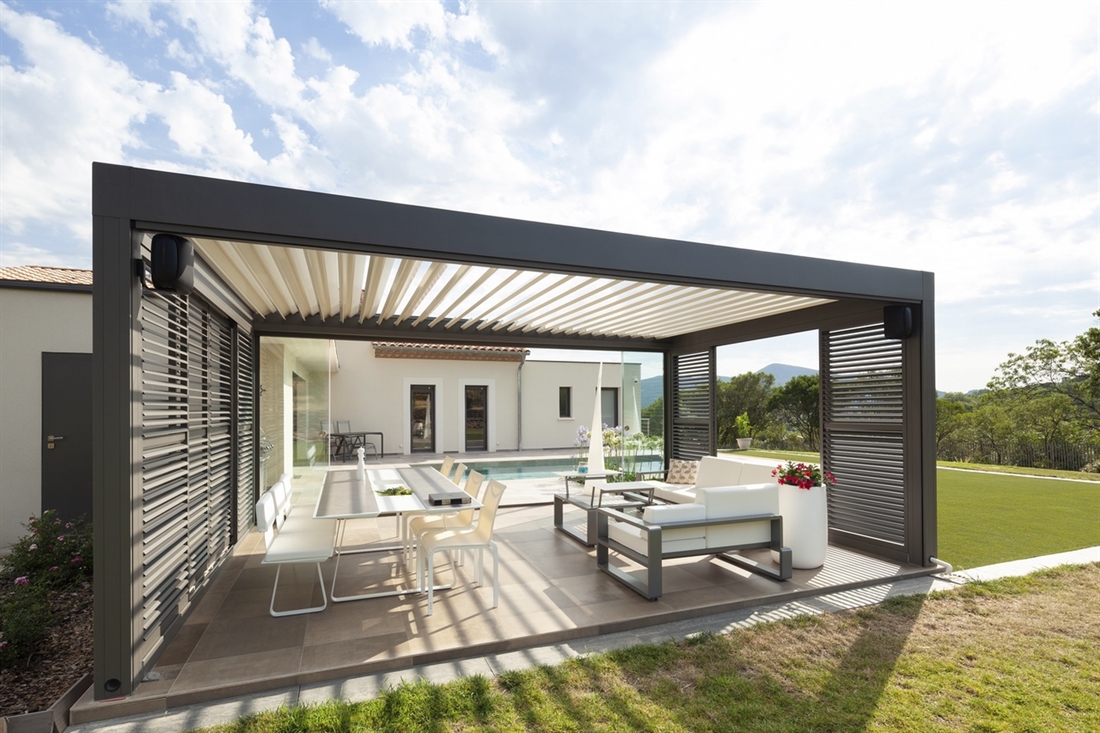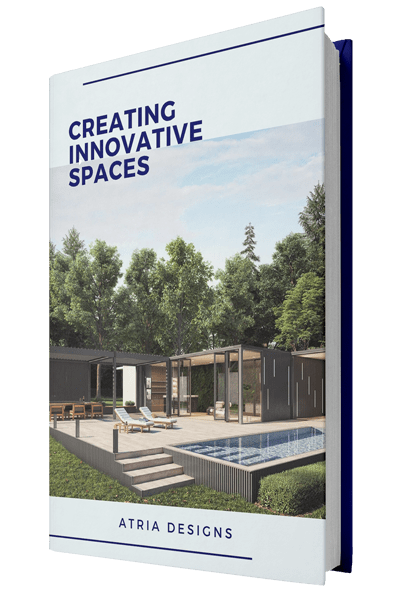 Back
BackReduce Heat Gain and Glare: A Guide to Sun Control and Shading Devices
-
July 22, 2022
Solar Shading
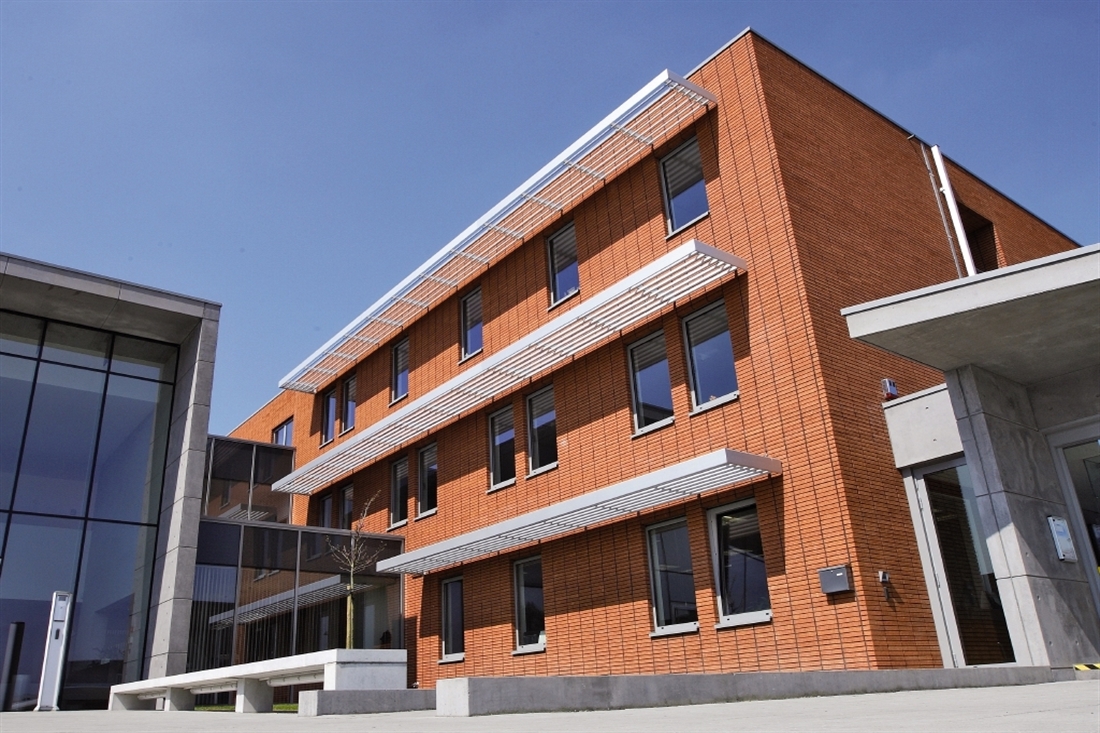
Did you know that shading devices can lower temperatures inside homes and offices by 35 to 50 degrees, and by reducing heat gain and glare, you can block out up to 95% of the ultraviolet rays?
Suppose you feel trapped in your office or home due to summer's high temperatures or hate opening windows because of the insects it attracts. In that case, you need to consider using shading devices to lower temperatures inside homes.
So, what's the best way to reduce heat gain and glare? And will it help to keep your interior more comfortable?
This article tells you how to use exterior shading products to control excess solar heat gain by delving into the best solar heat gain and glare control products.
What is Solar Heat Gain?
Solar heat gain occurs when solar radiation is absorbed by a material and converted into heat. This can happen through conduction, convection, or radiation. Solar heat gain can be desirable (such as when you're trying to warm up a room with solar power) or undesirable (such as when your home is getting too hot in the summer).
The sun's rays can pass through highly glazed areas like glass extensions that receive a lot of direct sunshine and heat gains. However, as the rays reflect off the items inside the space, they change in length and cannot pass back through the glass.
The heat energy is retained in the area, raising the temperature and making the area uncomfortable for building occupants to live in.
What is Solar Glare?
Solar glare is the sun's intense brightness that can cause visual discomfort or even temporary blindness. Bright sunlight striking your eyes or reflecting off the screen for an extended period might strain your eyes and give you headaches in a house where you might be using computers for work, school, or general duties.
This issue can be frequent if your property has a wide glass façade or south-facing glazing. Although this problem is more prevalent in commercial settings, it should still be considered when designing homes for private use.
Solar glare can occur when the sun is low in the sky, especially in the winter months, and when snow is on the ground. The reflection of sunlight off of snow can magnify the sun's brightness and make it difficult to see. Solar glare can also occur when clouds cover and haze in the atmosphere.
Why Should I Be Interested in Solar Control?
You should be interested in minimizing heat gain, reducing glare, and controlling the amount of sunlight that comes into your building. These can range from environmental reasons, improving personal comfort, addressing solar heat gain coefficient (SHGC) & u-factor values, energy savings, maximizing natural light, thermal comfort, and more.
If you live in a sunny climate, the excess solar gain will probably lead to high energy consumption, such as powering air conditioning systems. These options aren't energy efficient, and the extra energy consumption isn't good for reducing your carbon footprint. Sun control and well-designed shading devices can significantly reduce peak heat gain and cooling requirements while improving the natural lighting quality of building interiors.
By controlling the amount of sun through shading devices, you can improve comfort and alleviate the need for cooling systems.
Types of Sun Control and Shading
There are numerous sun control and shading devices available. These can be external window coverings, mechanical systems, natural landscaping, different glazing systems, or the addition of structures such as awnings, overhangs, and trellises.
Window Shading
These work by preventing unwanted solar heat gain from entering a building. They can be on the interior or exterior of a building, such as Venetian blinds, sliding doors, and motorized blinds.
In addition, they can form part of the building design with things like motorized retractable screens, wooden shutters, bamboo shades, and rolling shutters being incredibly on-trend.
Energy Efficient Windows - Glazing Systems
There are a few key things to consider when selecting energy-efficient windows for your home. One of the most important is the type of glazing or glass used.
Double-glazed windows are two panes of glass with a sealed air space. This air space acts as an insulator, helping to keep heat in during winter and out during summer.
Low-emissivity (Low-E) coatings can be applied to one or both sides of the glass to improve energy efficiency further. Low-e has a thin coating of metal oxide that allows visible light in but reflects infrared light (heat). Low-E coatings help keep heat out in the summer, and in the winter, they reflect heat inside.
Triple-glazed windows are three panes of glass with two sealed air spaces. As you might expect, triple-glazed windows provide even better insulation than double-glazed ones.
Thermochromic glass is a type of glass that changes colour when exposed to heat. When the glass is heated, the molecules in the glass change shape and allow light to pass through, causing the glass to change colour.
Thermochromic glass is used in various applications, including windows, cookware, and automotive applications. The negatives of thermochromic glass are that it is relatively fragile and can be expensive to produce.
If you're building a new home or replacing windows, consider using energy-efficient windows. There are many different types of window glazing available on the market today. The type you choose will depend on your budget, needs and preferences.
Natural Landscaping
This can include the use of trees and hedgerows. Because deciduous trees follow the season, they are in the whole leaf during the summer. Therefore, a large tree can block a substantial amount of sun and heat. Have you ever noticed how the area surrounding trees is also cooler? This is because of their natural evaporative cooling.
If you don't have the space or time to wait for trees to grow, then using trellises and dense foliage like vines can have a similar cooling effect.
Exterior Structures
These are one of the most practical methods of heat glare control for small commercial buildings and homes.
As the sun's rays hit a building, some energy is reflected into the atmosphere while the rest is absorbed as heat. If a facility has a lot of exposed surfaces that are not protected from the sun, the heat can build up inside, making it uncomfortable for occupants and driving up air-conditioning costs.
One way to combat this solar heat gain is using exterior structural shading products. This can be in the form of overhangs, louvres, or other features that block direct sunlight from hitting the building. It is an efficient way to promote heat and glare control because it does not rely on energy-intensive systems like air conditioning. Additionally, it can be designed to complement the aesthetics of a building.
One of the primary benefits of this type of shading is its efficiency in sun protection. By dynamically adjusting the angle and orientation of the shading elements, they can provide optimal protection from the sun's rays at any given time.
Some examples to consider include awnings, sliding shutter panels, and types of aluminum brise-soleil.
Light Reflection
Light shelves are horizontal reflective surfaces. These are good alternatives if you don't have the space for a more extensive exterior construction like an awning.
They work by reflecting natural light away from a building and bouncing the sunlight off their horizontal surface. They are frequently installed above a window.
It's important to consider that with this type of solution, it may be challenging to offer protection in low sun angles, depending on the orientation of your building.
Using Colour
Although not strictly a shading device, another light reflection method is down to colour. The choice of colour can affect how much heat gain and glare a building is subjected to.
In the Mediterranean, it's not uncommon to see whole white towns; not only is this aesthetically pleasing, but the use of white helps to reflect the sun and heat away from the buildings.
If you have a dark building, then it will absorb more heat. This is the same for interiors if the sun is hitting a room. Lighter-coloured rooms will naturally stay cooler as they absorb less heat.
Advantages of Using Heat Gain and Glare Devices
There are multiple benefits to installing sun control devices. We mentioned a few already, but here are more advantages of why you should consider installing these systems.
Improved Energy Efficiency
Solar control helps to keep a balance between energy efficiency and comfort. For example, a building can reduce its cooling loads by 85% by using solar control devices. With worldwide energy increases, this could be a significant factor in switching from mechanical cooling methods to more energy-efficient ones.
Productivity Improvement
Hot and stuffy rooms are never suitable for occupant comfort and productivity. The ideal room temperature for optimum productivity is between 72-76-degrees Fahrenheit. If your office building is not designed to control heat energy and optimize thermal comfort, your employees aren't working as efficiently as when they are at a more comfortable temperature.
Provide Natural Light
As well as cutting heat gain and glare, solar shading devices, like external window coverings, are a great way to provide diffused and natural daylight. This reduces the need for artificial lighting and provides a better work environment.
Improved Aesthetics
By incorporating a shading device, you can improve the architectural appeal of a building as they add distinct features to it. Facilities with a more sophisticated look can help increase their value and make them stand out among other structures in the area.
These shading devices can come in various colours, materials, and styles to match the look of the building. They can also be customized to specific dimensions to achieve the desired look.
Sustainable & Green
Global warming is a real problem, and reducing our carbon footprint is something we should all be conscious of doing. A shading device is a much more sustainable way of keeping a building cool and reducing cooling costs. After the initial outlay, there are minimal running costs, just a small amount of maintenance. A shading device will last you for years, so it's much better for the environment than air conditioning systems.
What to Consider When Selecting Sun Control and Shading Devices
When choosing which solar control method you want to install for your project, you will need to consider several things. Some of this is to do with the physical building; other considerations will be the environment.
Sun Position
The position of the sun will have an impact on the type of shading device you use. These are divided into two categories: the altitude and the sun's azimuth angle.
- The altitude angle is based on the horizon and the angle of the sun above it, with the maximum angle, achieved at solar noon.
- The azimuth angle can also be called the bearing angle, which refers to the sun's projection onto the ground plane relative to the south.
Building Considerations
Simple fixed overhang style shades are efficient for south-facing windows and during the summer months when the angle of the sun is high. However, using an overhanging shade isn't great at blocking low afternoon sun, or if it's a west-facing window in summer.
Shading devices will also have an impact on buildings' appearance. Sometimes they can improve the aesthetics, but other times, they may be an eyesore or an annoyance for people in surrounding buildings, significantly if it obstructs their view.
How Are You Shading Your Home or Business From the Sun?
In this article, we've gone into many details about reducing heat gain and glare. If you're considering installing a sun control device but are unsure which one is right for you, then we are here to help.
Experience the comforts you deserve, and speak to a knowledgeable team member today to discuss which shading device is perfect for you.
 Back
BackRecent Posts

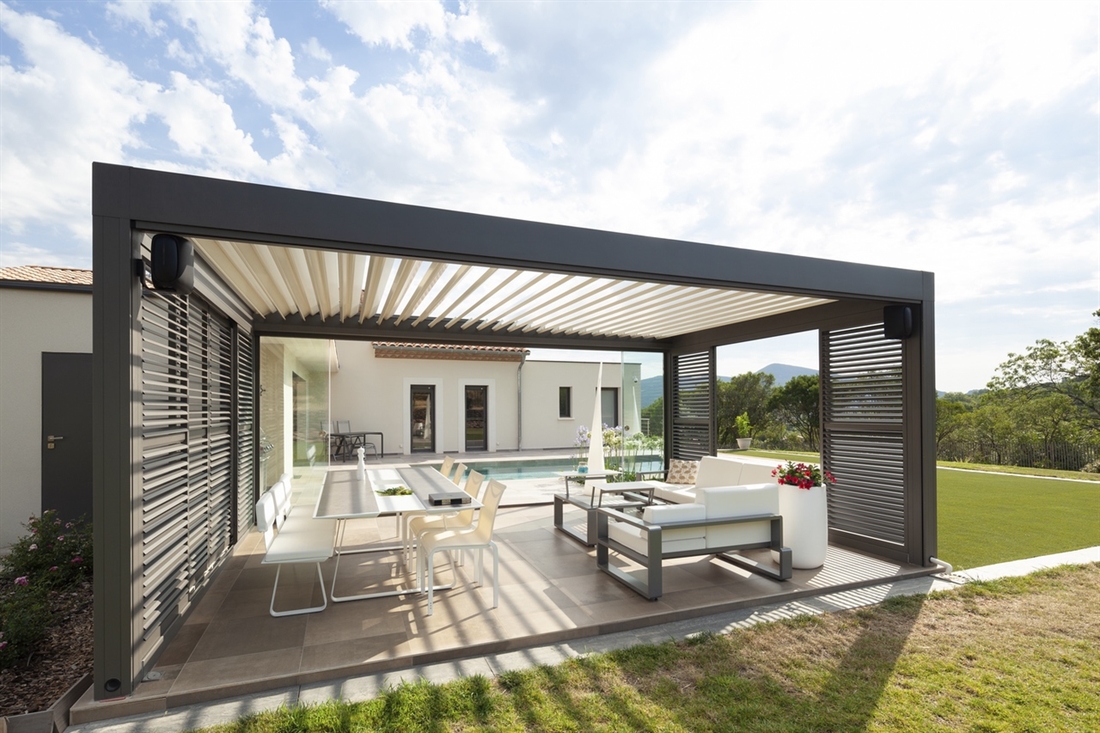
Pergola: what is it, and what's it best used for?
- June 17, 2022
When you think of pergolas, what comes to mind? Do you see them as purely functional structures that have a specific purpose? Or do you view them as works of art that can add beauty, style, and give life to your outdoor space? In this blog post, we will explore the many purposes of pergolas.
 Prev Post
Prev Post 
Our Latest Brochure
Imagine the possibilities for your project and find a solution that’s right for you.
DOWNLOAD NOW

